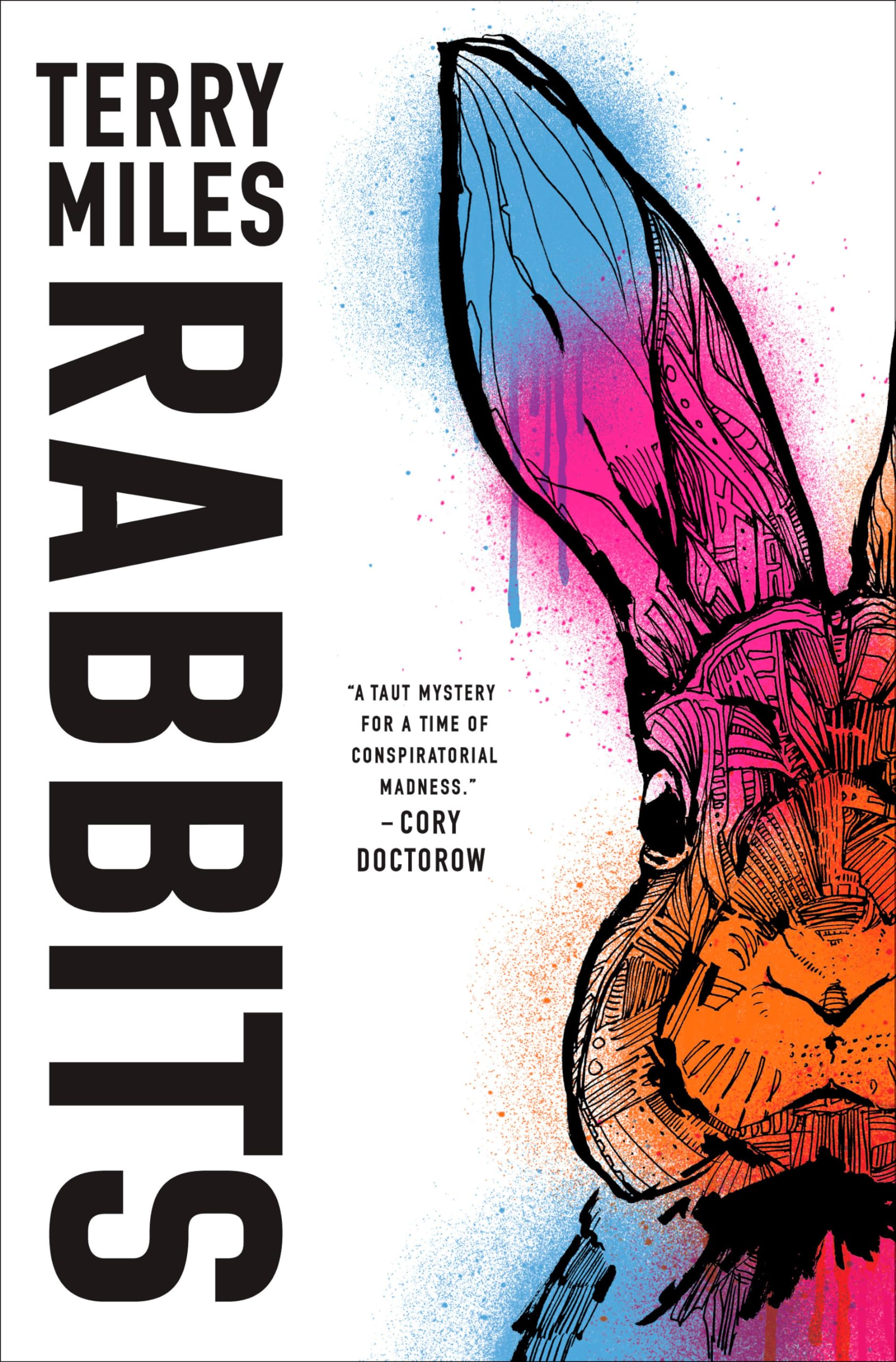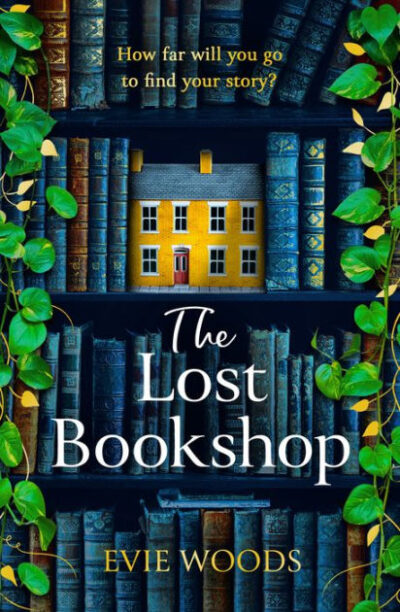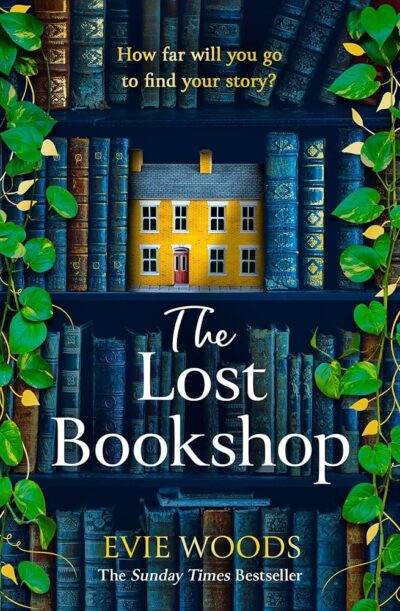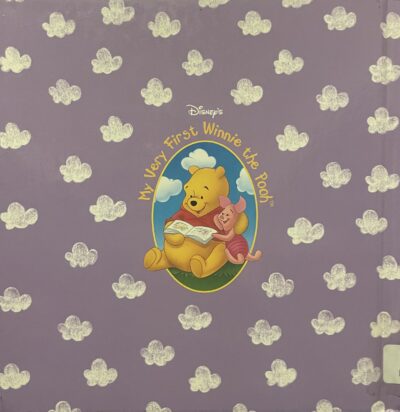For this post, I read Rabbits by Terry Miles. I originally bought the book a few years ago because the title and cover art caught my eye. I wasn’t sure what it would be about – and only read about 30 pages before becoming disinterested. It wasn’t bad – but didn’t keep my attention enough to continue reading. I’ve been meaning to give it another chance, and this post assignment allowed me to do so.
Describing My Experience
As I draft this post, I’ve read more than half of the book. It is classified in the science fiction genre but focuses specifically on the possibility of different realities and/or multiverses weaving together. The story follows the character, K, who little is known about in terms of their full name and gender. Keeping an element of mystery and ambiguity allows the reader to focus on their experiences without an implicit bias.
K experiences discrepancies between some of their memories and what others say is reality. Many times, the differences are so slight that they sound like something that might actually occur in the real world. K is obsessed with playing a game known as Rabbits, in which they follow and connect anything that seems slightly off in the world. The game is mysterious and known to be dangerous. An assumed previous player of the game, Alan Scarpio, visits K, telling them that there is something wrong with the new iteration of the game. Scarpio disappears the next day, prompting K and their friends to unknowingly begin playing the game as they look for clues about his disappearance.
The question of K’s sanity always lingers, as while they believe they are experiencing shifts in reality, no one else can back them up. Their experiences and dreams seem very real to them, but their friends don’t remember them happening. K also has insomnia, OCD, and has had mental breakdowns previously. It is hard to tell if their retellings of a shift in reality are real or not.
Classifying My Experience
The book’s themes of reality bending and alternative universes/possibilities lead to my overarching experience of thinking “What if?”. The book’s science fiction elements were not hard to imagine occurring in our own world. My experience of immersion strengthened this believability, which contributed to a heightened sense of paranoia.
On the other hand, not knowing if what K was experiencing was real or the result of a mental break evoked skepticism and worry for their and others’ wellbeing.
Features That Prompted My Experience
Immersion
Throughout the book, K experiences what they call “the gray feeling.” It occurs when something is off or is about to go wrong. K will see a swirling form/cloud of gray slowly encroaching on them. Sometimes, they can push the feeling away, but if not, they lose time and memory. They usually have a false memory no one can confirm when they awaken back to reality. The following passage describes one of these events. As K begins to walk home after seeing and feeling the gray feeling, they experience a simple event that turns dangerous.
A green Dodge minivan sped through a busy intersection, windows down, music blasting. I recognized the song. I think it was Band of Horses, something from an album I used to listen to all the time, but I couldn’t pull the name.
A tall dark-haired woman with a miniature greyhound smiled at me as she stepped off the curb and started walking across the street her little dog’s legs a furious blur as it hurried to keep pace.
I smiled at the dog and stepped off the curb a second later.
I could hear the Band of Horses song fading as the minivan moved away. The way the music echoed high among the skyscrapers in the distance reminded me of a soundtrack from the edge of a dream.
Suddenly, I felt a hand grab the collar of my jacket and yank me back. A split second later, a white Volvo station wagon sped through the amber light.
That car had come so close to hitting me that whoever was driving didn’t have time to honk.
I looked across the street.
The light hadn’t changed, and the woman with the greyhound hadn’t actually stepped off the curb.
She was the one who’d pulled me back onto the sidewalk and away from the oncoming station wagon. (p. 98-99)
This quote made me feel immersed in what K thought they were experiencing. They described everything they saw and heard, such as the car type, song name, and woman with a miniature greyhound. Furthermore, they conveyed a clear picture of it being safe to cross when they did. They heard the song from the minivan fading away and saw the woman with the dog start to cross the street before them. The only hint that something might be wrong was the distance song reminding K of “a soundtrack from the edge of a dream.”
It is a hard pivot back to reality when it is revealed K was almost hit by a car. It takes some time for K and the reader to adjust to the realization that they thought they were experiencing something else. Since all the things K remembered – the car, the song, the woman with the dog, are all still there – it made me wonder if what K originally experienced was real. The only thing that changed between the two versions was the timing of the red light. Changing just one element of the experience makes it more fathomable.
Thinking “What if?” and Paranoia
Although K has their own reality shifts, the game Rabbits has players follow real-world discrepancies as clues. They often mirror the Mandela Effect, in which a widespread group of people remember a certain thing differently than it actually is/was. An example of this would be many, including myself, remembering the children’s book series known as The Berenstein Bears. In reality, the book’s title was always spelled and pronounced The Berenstain Bears. The collective memory of the former leads many to wonder if glitches in the universe exist. The use of relating the game to a known phenomenon makes some of the reality shifts more plausible, such as the following quote:
Staring back at me from that screen, in a computer game from 1983, was the main character from a videogame that wouldn’t exist until almost a decade later
The monster on the screen was Sonic the Hedgehog. (p. 80)
K is recounting how they got back into playing Rabbits as an adult in college. Their friend heard that there was something strange in a 1983 video game. He thought it might relate to the mysterious Rabbits game. When K and their friend saw Sonic the Hedgehog in a game released years before, I was shocked but had alternative explanations: what if Sonic had always appeared in the game and people were misremembering? Maybe it was a prototype of Sonic being tested in the older game. Or was it possible that it was just a look-alike character that had been the inspiration for Sonic years later? Although I have doubts, the discrepancy of reality is so small, that I can imagine this happening in real life.
These small, believable differences are again explained in the following quote:
Would you notice thirty dollars less in your bank account? What if the bookmark you were using was suddenly stuck between different pages than it had been when you left for work that morning? What if you woke up one day and some of the pictures in an old family photo album were different than you remembered? (p. 249)
In combination with thinking “What if?” the possibilities of such small misalignments, I experienced paranoia. The Experiences Glossary defines it as “A feeling of threat triggered by environmental irregularities.” The term “environmental irregularities” relates closely to the story’s theme of multiverses bleeding together. Since we already see such small discrepancies in the real world, it makes it easier to imagine that some of the more negative effects in the book could also occur: friends forgetting who you are, family disappearing without a trace, and other forms of reality falling apart around you. In other words, it is easy to go down the rabbit holes the book presents.
The following quote solidifies my experiences of thinking “What if?” and paranoia.
Some true stories are easier to accept if you can convince yourself that at least part of them are fictional. This is one of those stories. (Prologue)
The book opens up with this quote by an unknown person. This sets up the reader to constantly question if parts of the story could be real. It also cautions them that it’s better to think of the story as fiction, as the implications of its reality are hard to accept.
Skepticism
K and others around them constantly question their experiences. It is hard to tell if their reality shifts are real or the result of a mental health crisis. In the following passage, K’s friend, Chloe, wonders if the catalyst for them playing the game even happened.
You know, you’re the only person who saw Alan Scarpio.
Yeah, so?
So … maybe it was like the Richard Linklater movie or The Kingfish Cafe.
What are you saying, Chloe?
But I knew exactly what she was saying.
I’m worried you might be experiencing some kind of… relapse. I don’t want to have to visit you in that section of the hospital again. (p. 188-189)
K was alone when they met with Alan Scarpio, and no one else remembers seeing him in the area. Additionally, K remembers a third movie that never existed to Chloe and others: Before Midnight. K remembers the Seattle restaurant they frequented, The Kingfish Cafe, closed years ago, while it is indeed still open, and Chloe says they went there together recently. K has no memory of this. Due to K’s previous apparent struggles with mental health and the current issue of not sleeping, it is hard to rule that they are having false memories.
Although I had never heard of Richard Linklater’s Before trilogy and The Kingfish Cafe, I decided to fact-check K. There was a film called Before Midnight by Richard Linklater and a restaurant called The Kingfish Cafe in Seattle that closed permanently in 2015. It makes me question Chloe’s intentions, and if K is from our reality/universe, stuck in a different one.
Possible Technologies
Narration
The story uses a combination of narration technologies that always beg the question of whether anything that happens is real or not. The book is narrated using the technology, I Voice, a first-person perspective by K. Since K is the only one to tell the story, it is up to the reader to choose how much, if any, they believe. This weariness in believing K can be categorized as an Untrustworthy Narrator. K is experiencing events that do not seem to be set in reality. This poses the question of their mental state.
After K experiences shifts in reality, the reader sees their thought process. K is often trying to come to terms with events, struggling to tell what is real. It evokes the reader’s experiences of skepticism and worry for K’s well-being. This type of narration is a combination of Stream of Consciousness and Soliloquy. K’s thoughts are free-flowing and convey what they are feeling in the moment. Additionally, K’s soliloquy of their constant conflict of sanity is explored through their thoughts. Although K’s questioning of themselves adds to a reader’s distrust, their honesty and confidence in false memories leads the reader to question, “What if?”
Storyworld, Plot, and Character
Much of the storyword, plot, and characters of Rabbits utilize the Reality Shifter technology. The book literally explores the possibility of reality shifting and its effects on K’s life. K’s ability to sense and experience these shifts is something hard to grasp as being totally real. A few times, a Cosmic Wink is combined with the Reality Shifter technology (Cosmic Wink + Reality Shifter) to break the fourth wall of the story. This can be seen in the prologue quote, which makes readers question the validity of the story before even starting it.
Dream of the World is another possible technology used in Rabbits. The definition of the technology in the Technologies by Element of Narrative Glossary is “A narrative that moves between two different worlds, not settling with any certainty which is the ‘real’ world.” While not two very distinct physical worlds, K’s experiences with different versions of events add to the theory of them traveling through different universes/realities. It is never known if their reality shifts experiences did happen in some universe or if they are just experiencing a mental break in the only “real” universe.
Thoughts After Finishing Book
Evidence for K’s Experiences
The book’s second half seemingly answers many questions about K’s experiences. K discovers their parents were not accountants but rather working at a research institution studying multiple realities. They did so by studying the game of Rabbits and its players.
You know how asked you about feeling stranger, noticing patterns and coincidences, or missing time?
Yeah…
Well, that’s because the research our parents were doing at the Gatewick Institute involved them taking a large number of experimental drugs-including a prenatal cocktail our mothers were instructed to continue taking through all three trimesters of their pregnancies. (p. 292-293)
K is talking with a childhood friend who they haven’t seen in decades, Emily Connors. Emily explains that both of their parents were involved with the Gatewick Institution and Rabbits. It is suggested that the drugs given to K and Emily’s mothers during their pregnancies caused their children to have a higher awareness of reality, presenting as K’s grey feeling. Although K has always felt a connection to the game of Rabbits and finding discrepancies, they never considered their parents were responsible for it. It is a plot twist that adds validity to K’s reality-shift experiences. This introduction of possible supernatural abilities utilizes the technology enigma. It seems impossible to be true, especially due to the untrustworthy narration.
A bit later in the book, K’s reality/universe is literally falling apart. I’m not exactly clear on how/why the story got here, but K is left with the one person who has yet to disappear from reality, Emily. They have about an hour left before the world’s end, so Emily further validates K’s experiences.
K explains at the beginning of the book how they first heard about the game of Rabbits as a teenager. Emily and her sister Annie were following a Rabbits clue that directed them to drive at high speed with no headlights on at night. K joined them, interested in the game. They ended up nearly hitting an elk and swerving off the road, killing Annie. K would often dream of the night and see a gray figure instead of the elk, pointing to a discrepancy in reality. Emily’s perspective confirms this:
We were listening for something, and then suddenly there was a huge elk, and that’s when you swerved to the left.
That wasn’t what happened.
What do you mean?
You swerved to the left, she said. Not me.
What? No. I- But she was right. Suddenly I remembered.
I was the one who had turned the wheel.
And it was a tractor, not an elk, Emily said.
That’s right, I said, and in that moment, something shifted in my memory. Maybe it was my proximity to Emily Connors after so many years, but it was like a fog had been lifted and the entire scene was suddenly clear. I remember now; the tractor was rust colored. (p. 401-402)
This passage uses the narration technology of second look, in which Emily retells the events of a traumatic night for them both, clearing up the false memories K had. It added to my immersion experience into a world with multiple universes.
Emily and K first saw each other again a few months before the imminent end of their reality. Emily seems shocked and doesn’t say much before walking away. She eventually uses her Gatewick Insituion ability to leave discrepancies in reality for K to find her. She explains that there are multiple realities, and tells K about their parents. She also tells them they remind her of someone, which felt out of place as they already knew each other.
K’s Feelings Towards Emily and Chloe
Emily’s strange comment ended up being a hint at the bigger plot twist of the story. Emily tells K that they were married for 4 years in a different reality. In that reality, they reconnected years earlier and started working for a company that was researching reality shifts. Somehow, (again the explanation is a bit murky) K was thrown into a different reality, where they have no recollection of Emily being their wife or the life they lived. Emily has been trying to find K since. Emily’s comment about K reminding them of someone was in reference to the version of them she had a relationship with.
K’s reaction to this caused an experience of frustration. Throughout the book, K gets into a relationship with Chloe and seems to really care about her. However, as reality falls apart and Chloe disappears without a trace, K gets over it immediately and continues to play Rabbits. Right before Emily tells K about their relationship, they kiss, and K feels like they have a serious connection. It felt like K didn’t really care about Chloe, as their time together might have been comprised of mostly fake memories. I still felt bad for her as she was always there for K.
More Confusion
At this point, I thought it was pretty evident that K’s reality shifts were real, but the ending of the book left me confused. K continued to question themselves and Emily’s story:
Slipping into dimensional streams and forgetting a whole other life where you and I are married doesn’t sound like the most likely explanation. My experiencing a severe break with reality feels far more likely. (p. 395)
K and Emily end up “stopping” the end of the reality by driving a car, with no headlights, into the grey figure, this time not swerving. K wakes up in Alan Scarpio’s vacation home. He apparently found K wandering in the middle of the street. When K asks if Scarpio believes their reality shift experiences, he tells K that he thinks Rabbits is controlled with advanced AI, not reality shifts. Alan suggests K may have imagined it all, strengthening the possibility of it being a mental break.
Scarpio shows K that they are listed as the winner of the 11th iteration of Rabbits, and they will receive what they desire most soon as the prize. Chloe walks in, reunited with K, supposedly being the person K most desired to see. I’m not sure if this means Emily no longer remembers K, if Scarpio is lying, or if the game of Rabbits is “fixed” now. There are so many unanswered questions left at the end of the book, again making me question our own universe/reality.
Works Cited
“Before Midnight.” IMDb, IMDb.com, 14 June 2013, www.imdb.com/title/tt2209418/?ref_=nv_sr_srsg_0_tt_8_nm_0_in_0_q_before%2520mi. Accessed 22 Mar. 2025.
Experiences Glossary – Story & The Brain. https://unewhavendh.org/story-and-the-brain/experiences-glossary/. Accessed 22 Mar. 2025.
Miles, Terry. “Rabbits.” Goodreads, Goodreads, 8 Jun. 2021, https://www.goodreads.com/book/show/55481226-rabbits. Accessed 20 Mar. 2025
Technologies by Element of Narrative – Story & The Brain. https://unewhavendh.org/story-and-the-brain/technologies-by-element-of-narrative/. Accessed 22 Mar. 2025.
Wayne, Julia. “After Almost 20 Years, Capitol Hill’s Kingfish Cafe Is Closing [Updated].” Eater Seattle, Eater Seattle, 13 Jan. 2015, seattle.eater.com/2015/1/13/7542903/kingfish-closing-capitol-hill. Accessed 22 Mar. 2025.
Featured Image
Cover for Rabbits by Terry Miles. Book Design by Simon M. Sullivan. Del Ray Books, a Division of Penguin Random House LLC Publishing. All Rights Reserved.




